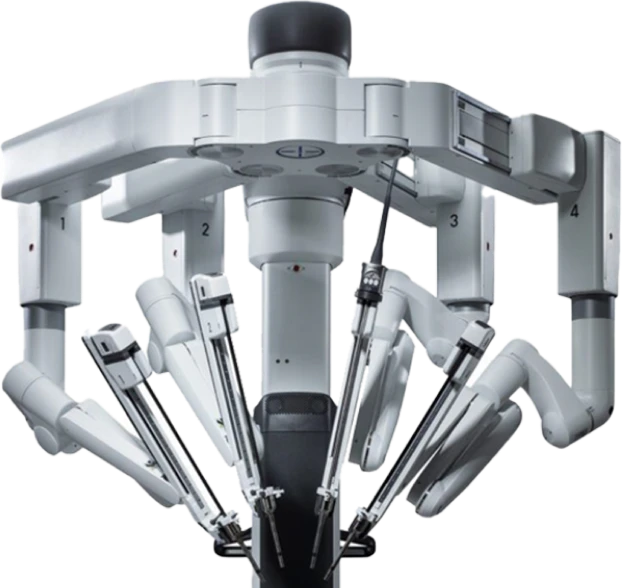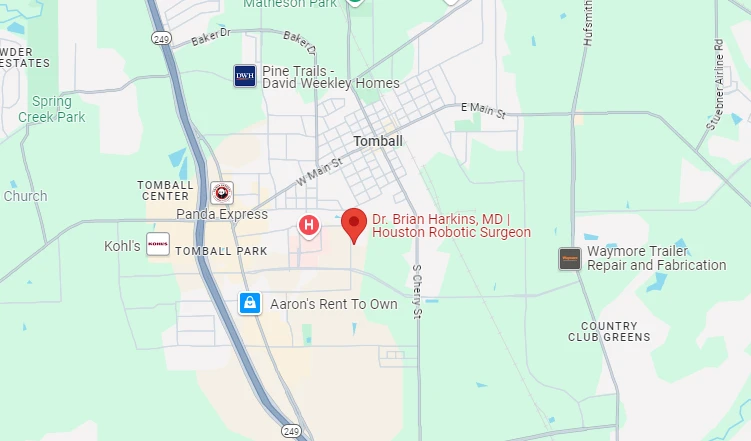Dr. Harkins uses the latest DaVinci surgical system to deliver precise, minimally invasive care for gallbladder conditions, helping you recover faster and feel better sooner.




The gallbladder plays a vital role in digestion, but various conditions can impact its function, causing pain and discomfort. Common gallbladder conditions include gallstones, inflammation (cholecystitis), and bile duct obstructions. These conditions may lead to symptoms such as abdominal pain, nausea, vomiting, and digestive issues.
Dr. Harkins and the surgical team specialize in diagnosing and treating these conditions using advanced techniques, including robotic surgery, to provide precise, minimally invasive solutions. Whether managing gallstones or addressing chronic gallbladder disease, our personalized approach ensures optimal care tailored to each patient's needs.
Discover how our expertise in gallbladder health can help restore your well-being.
There are two types of gallstones: cholesterol and pigment stones. Cholesterol stones are the most common. They are often yellow-green in color and are made mainly of hardened cholesterol. Cholesterol gallstones are more common and found most often in women over 20 years of age (usually pregnant), men over 60 years of age, and generally those who are overweight, use crash diets, or use medications such as cholesterol-lowering drugs or birth control pills.
Pigment stones are made of a yellowish pigment called bilirubin and are less common. Gallstones can lead to pain in the upper right abdomen or the center of your stomach. Pain caused by gallstone issues usually lasts for only a few hours, but it can feel severe. Pigment (bilirubin) gallstones are found most often in those with severe liver disease or with some blood diseases such as sickle cell anemia and leukemia.
Gallbladder pain may occur after eating fatty foods, such as fried foods, but can also occur at any time.

Cholecystitis occurs when there is redness and swelling (inflammation) of the gallbladder. It happens when a digestive juice called bile gets trapped in your gallbladder. Normally, bile drains out of your bladder and into your small intestine. But if the bile is blocked (usually because of gallstones), it builds up in your gallbladder, causing inflammation and infection. Treatment can range from antibiotic therapy to surgery.
Gallstones form when bile stored in the gallbladder hardens into stone-like material. Too much cholesterol, bile salts, or bilirubin (bile pigment) can cause gallstones. Gallstones can be as small as a grain of sand or as big as a golf ball. Your gallbladder may form a single large stone, hundreds of tiny stones, or both sizes at the same time. Some people with gallstones don't have any symptoms or don’t have symptoms right away.

Cholelithiasis occurs when gallstones are present in the bile ducts, the tubes that carry bile from the gallbladder to the small intestine. These gallstones can block the ducts, causing bile to back up and potentially leading to severe complications. Obstruction of the bile ducts can result in pain, inflammation, or infection, and in some cases, it may lead to life-threatening conditions such as pancreatitis or liver infections. Prompt diagnosis and treatment are crucial to managing cholelithiasis effectively and preventing serious health risks.


Dr. Brian Harkins is a renowned surgeon specializing in advanced, minimally invasive, and robotic surgical techniques. With a dedication to innovation and personalized patient care, he has transformed countless lives by delivering exceptional outcomes.

I want a website like this, where do i start?